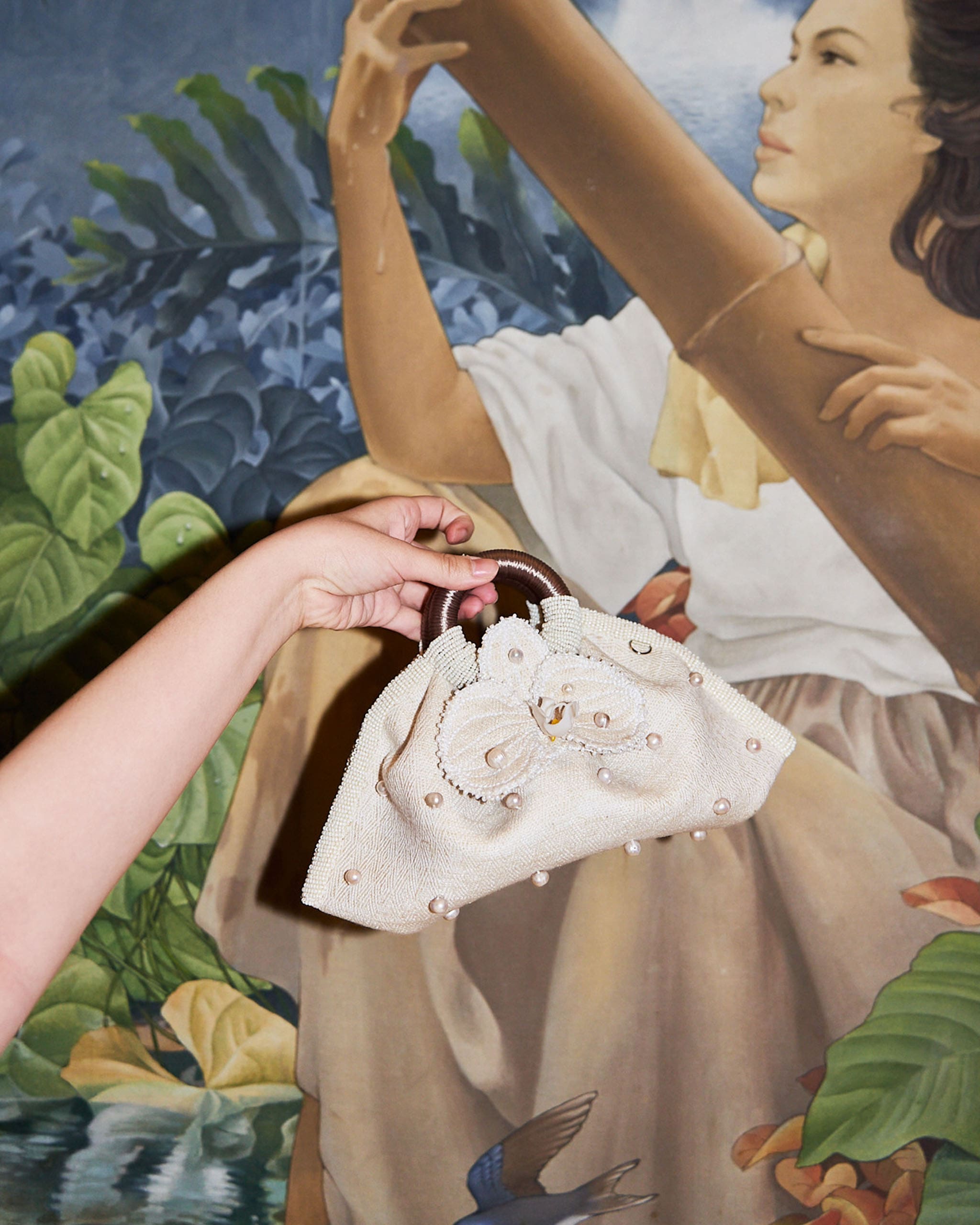Clutch made from bamboo textiles. Photo by Alexis Wang
The KAWAYARN Expo last Thursday was a display of Filipino creativity as designers presented different interpretations of the bamboo textile.
In the Philippines, fashion reflects the abundance of the land. The country’s flora and fauna have long bore sartorial offerings from traditional Filipinianas to the contemporary collections of today’s designers, as seen in Ma Collecta’s abstract florals embroidered on piña, Rajo Laurel’s sculptural abaca pieces, Bayo’s fabric made from the Bakong plant. This month, recent innovations ignite new possibilities for designers as The Department of Science and Technology – Philippine Textile Research Institute (DOST-PTRI) presents bamboo as a promising textile material, introducing KAWAYARN: The Bamboo Textiles PH Launch.
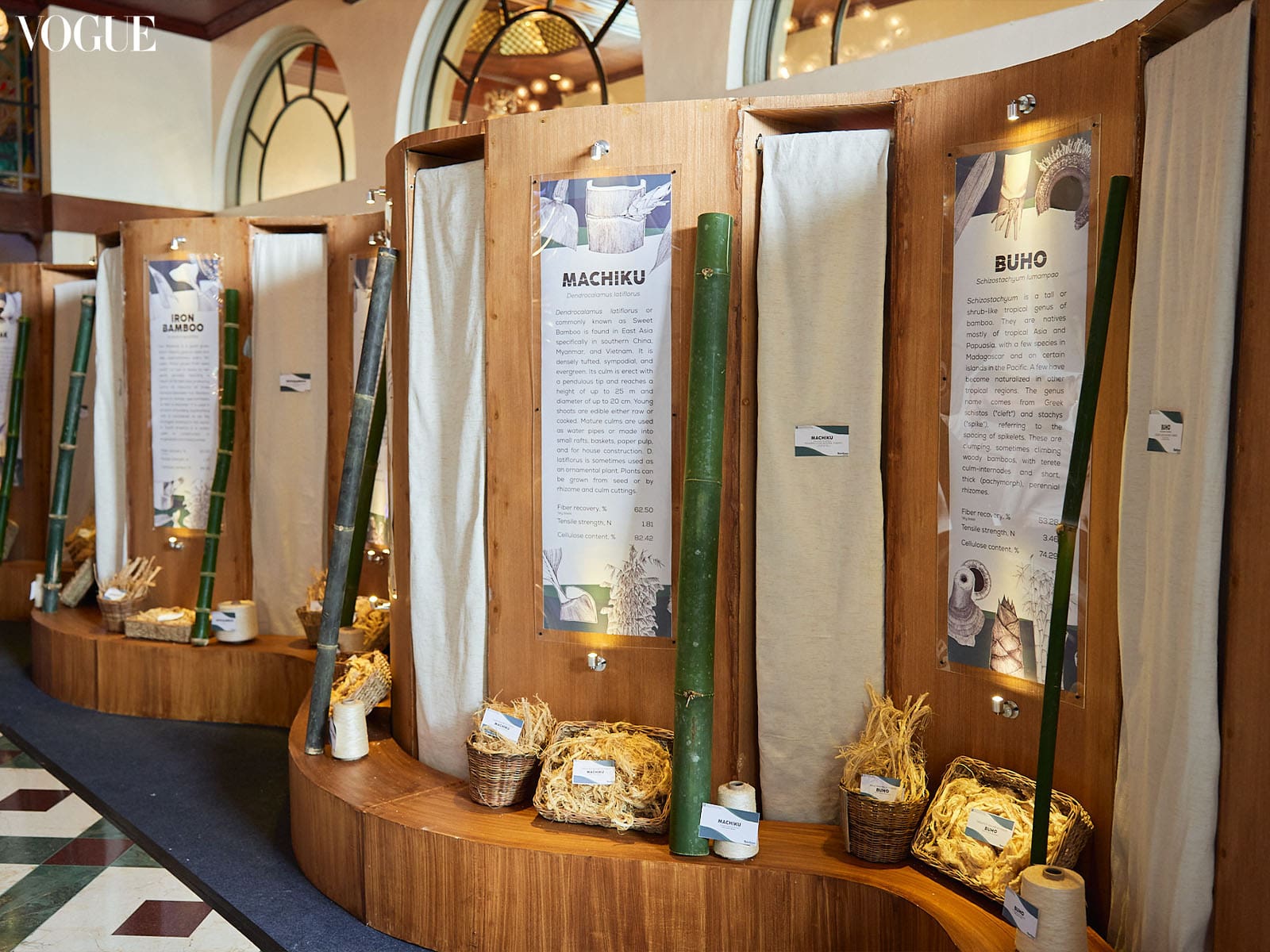
The KAWAYARN Expo that took place last Thursday at the Manila Hotel showcased the bamboo fabric in a variety of applications, from furniture, clothing, and accessories, featuring the designs of Anthony Cruz Legarda, Maison Métisse, Artifeks, Likhang Maragondon, and more.
Bamboo is a highly sustainable, renewable resource; if you cut a bamboo plant, it will regrow in a year. As a local fiber source, it is projected to compare favorably: “Bamboo textile fiber, or BTF, has a compelling value composition with at least 35% textile fiber recovery compared to the typical sources like abaca, banana, and pineapple leaf, which are less than 2%,” DOST Assistant Secretary Napoleon Juanillo Jr. narrated as he addressed the Expo guests.

National Scientist—and Vogue Philippines August 2023 cover star—Dr. Dolores Ramirez, who was an honored guest at the Expo, says that bamboo had been overlooked until recently when the DOST-PTRI decided to widen their search for natural fiber sources. Dr. Ramirez mused about the potential for more applications of science in the development of bamboo textiles, as it can be blended with other fibers like silk and cotton to produce different textures and affects. “And it looks like it’s going to be a much better resource because it’s quite abundant,” she told Vogue Philippines.
True bamboo
Filipino-American fashion designer and DOST-PTRI consultant Anthony Cruz Legarda told Vogue Philippines that what makes their textile special is that it is true bamboo, unlike that of other countries. “They melt down the bamboo in a cellulosic way, so if you look at the thread under a microscope, you wouldn’t know that it’s bamboo because it’s already melted or cellulosically broken down,” he explains. “So what’s really exciting about what we do is that if you look under the microscope, you will still see the bamboo fiber.”
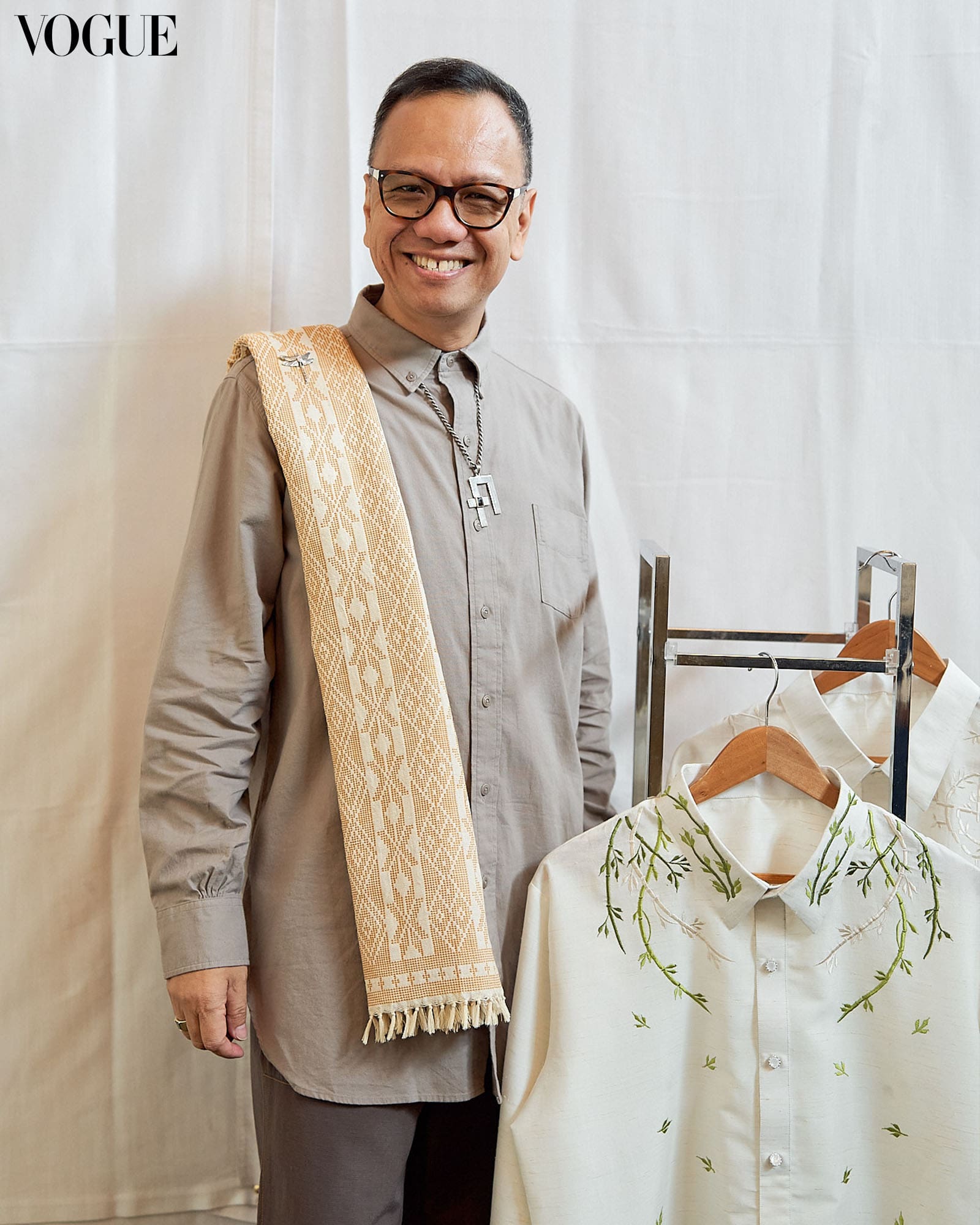
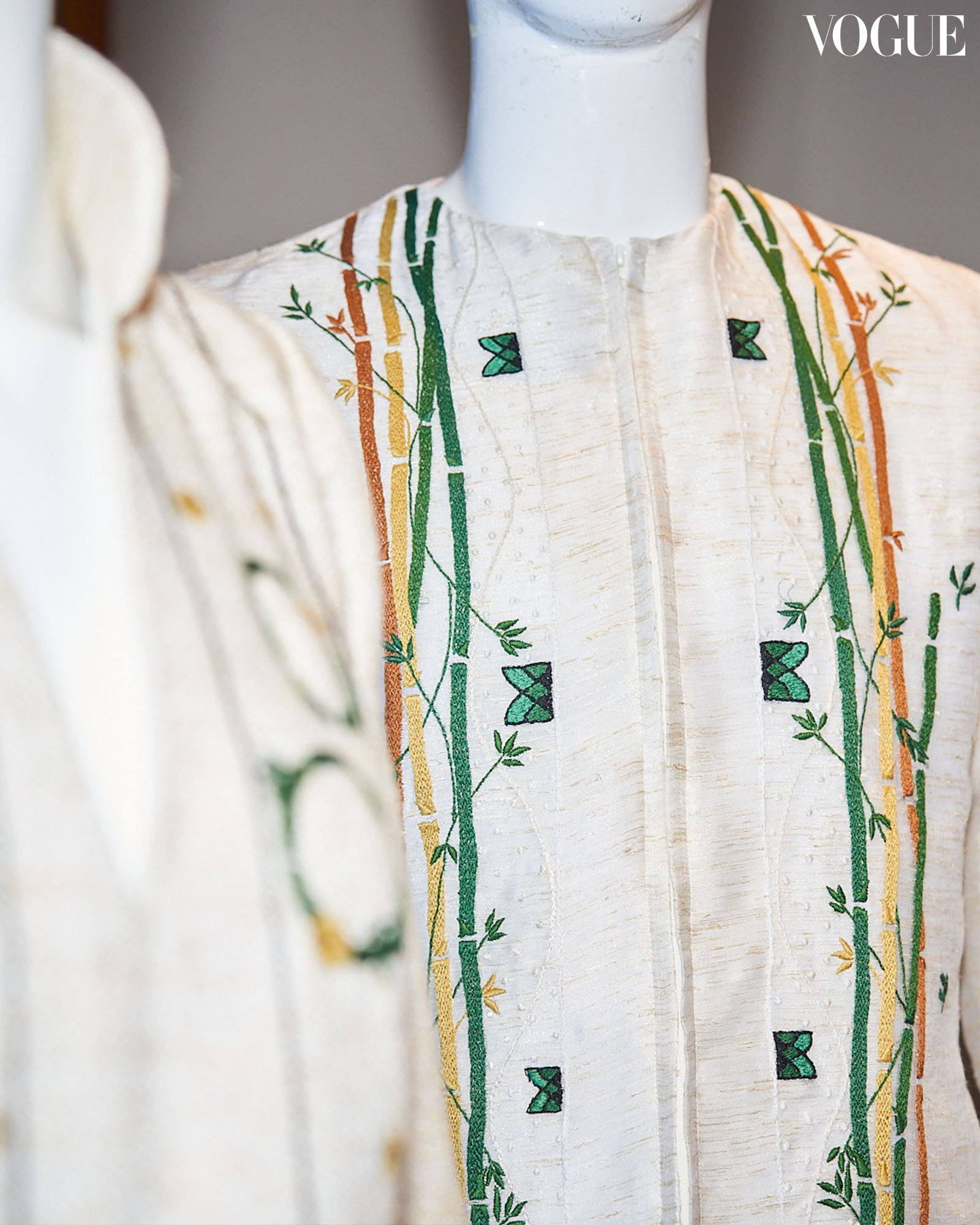
Cruz Legarda’s pieces on display at the Expo were handwoven by indigenous weavers in Ilocos (“Cotton on the warp, and Lyocell and bamboo on the weft”) and hand-embroidered in Lumban, Laguna, the country’s capital of embroidery. In a playful nod to the launch, bamboo motifs are paired with baybayin that spell out the word “Kawayarn.” The collection also featured a green trenchcoat made from “poly-bamboo,” which he said may make an appearance in his outerwear options in future collections. “It’s water resistant,” he says. “That’s kind of exciting.”
Collections from sustainable luxury brand Maison Métisse were also on display. With their “fiber-to-clothing” design philosophy, founder and designer Adrienne Charuel told Vogue Philippines that bamboo was something that was especially attractive to them. “100% natural, sustainable textile is really something that we advocate, so that’s why we were definitely drawn,” she told Vogue Philippines.
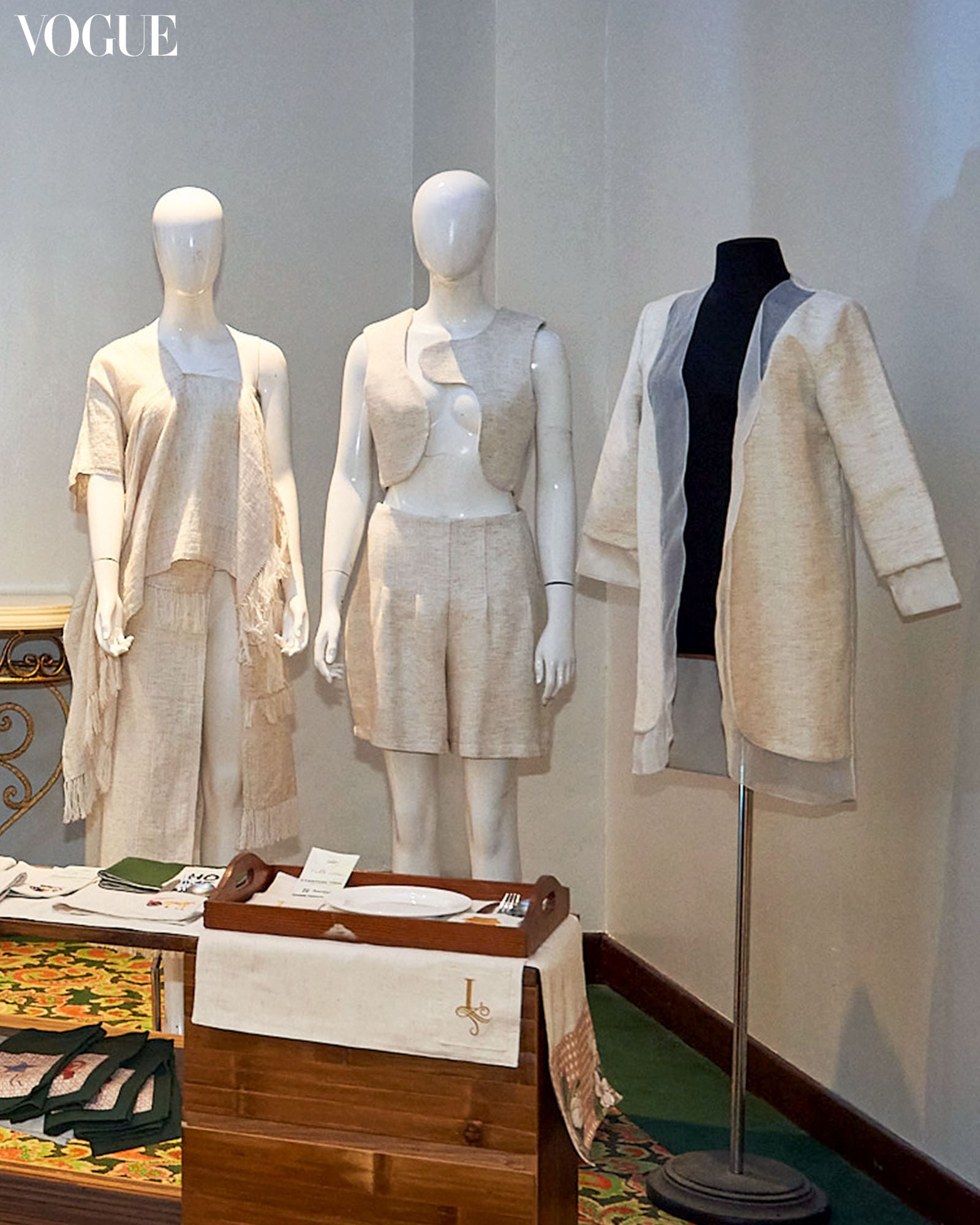
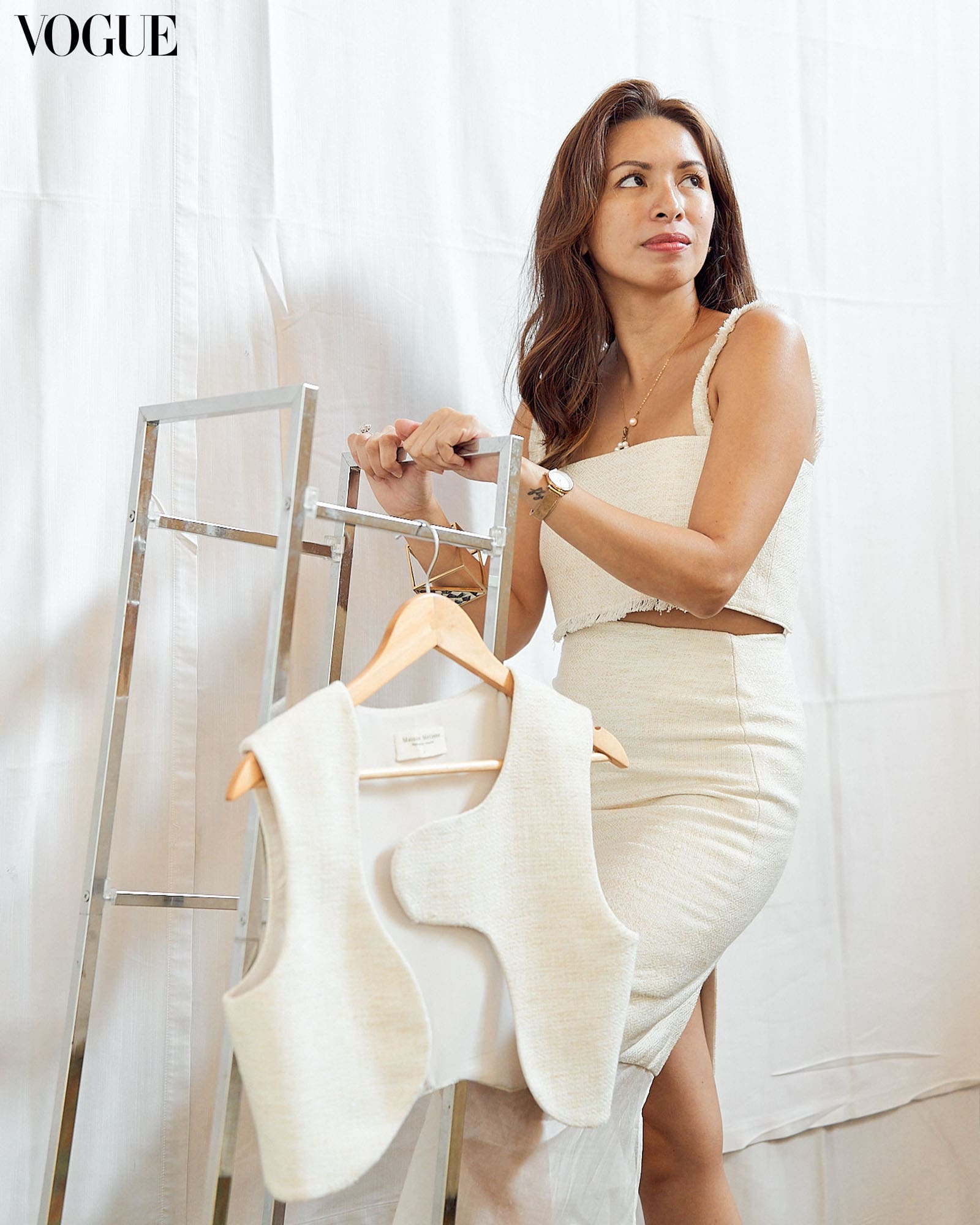
The fabric fit in seamlessly with Charuel’s wabi-sabi approach to her pieces. “If you see the yarn itself, it’s very fibrous, but then after weaving it and processing the textile, it really has a very nice texture to it that makes it unique,” she said. “There’s an organic vibe to it, which I personally really like. I like that it’s uneven but still beautiful.”
For Artifeks, a sustainable luxe furniture brand by CEO and creative director Clair Concepcion-Barberis, the raw bamboo fiber was beautiful to work with. Concepcion-Barberis, together with twelve artisans, works with local raw and upcycled materials to produce Artifeks pieces; she has worked with bamboo before, but never in its textile form.

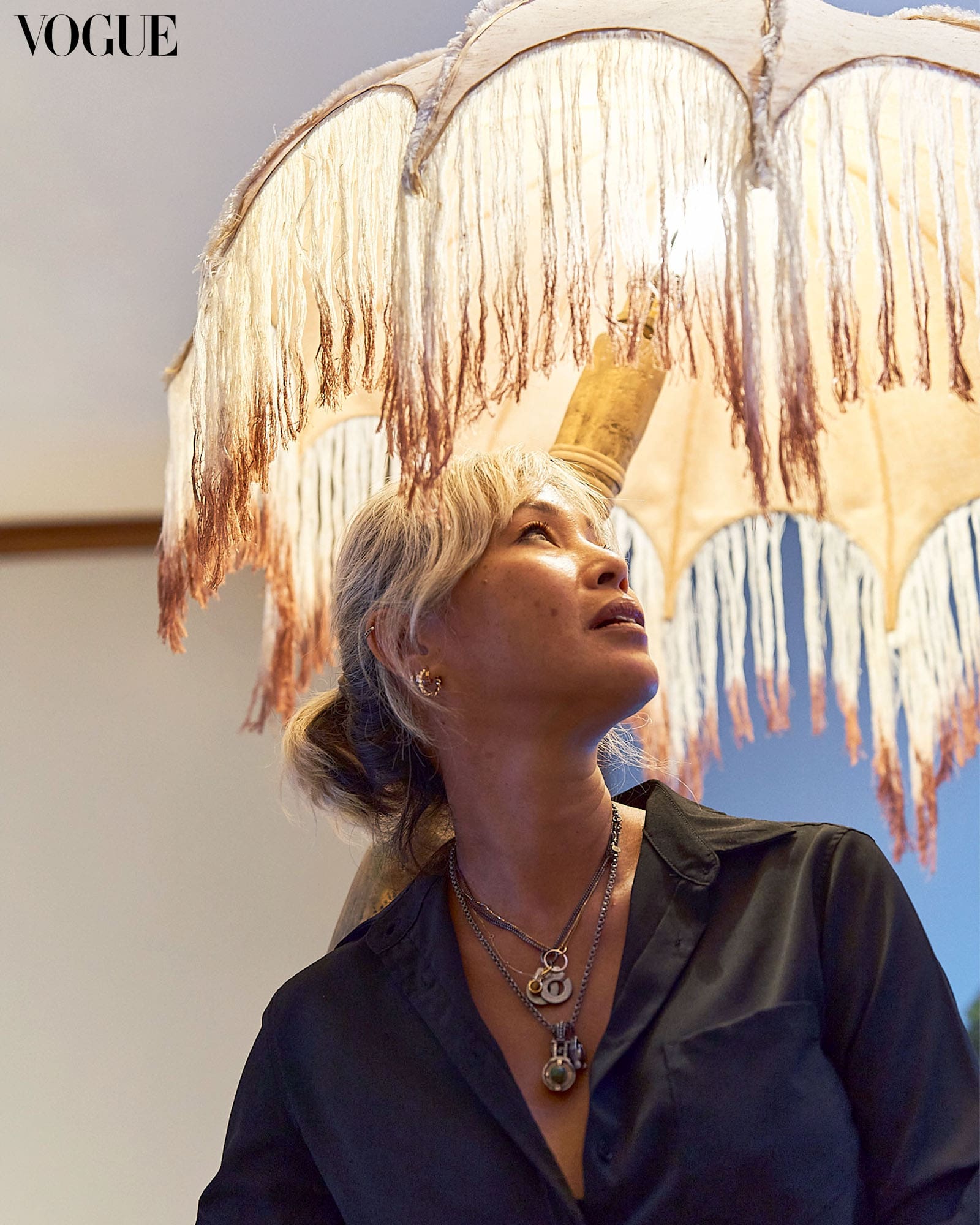
She notes that this type of bamboo textile isn’t something she’s seen in her scope of international luxury furniture. “I just came from Paris, and I’ve seen a lot of lamps using raw fiber, and no one’s ever really used bamboo fiber. So I think in terms of local creativity and our materials, I think we can be quite competitive in the global creative space.”
As for Likhang Maragondon’s Catherine Unas Diquit, she said she and her weavers couldn’t have been more grateful to have their designs displayed at the Expo. The social enterprise works with stay-at-home moms, working students, senior citizens, and persons with disabilities in Maragondon, Cavite with the aim of empowering them with livelihood opportunities. This month’s bamboo textile launch is incredibly meaningful to the people of the town, and in more ways than one. “We sent a proposal to DOST way back in 2020,” she spoke excitedly. “Maragondon is actually the bamboo capital, and the reason why we decided to put up Likhang Maragondon is because we wanted to save the dying tradition of weaving in our town.”


The three garments on display took a lot of effort, Diquit said, but the challenge didn’t make it any less exciting. “The funny thing is, we’re not really experts in terms of designing, and I just talked to two of our nanays,” she shares. “I told them, ‘Nay, can we do this? We only have a few days to do the pieces, but we can be part of history. We can tell people that even if we’re a small brand, we’re trying.’” The resulting pieces, made by the hands of Likhang Maragondon nanays Belen Villanueva and Arlene Anit, comprised simple yet elegant designs “woven with purpose.”
Filipino creativity at its finest
DOST-PTRI’s bamboo textile launch marks another move for the Philippine fashion and design industries towards more sustainable processes of making, but Dr. Ramirez notes that it also makes an indelible impression of Filipino creativity. “I think we have always sort of glossed over the creativity of the Filipino. We tend to look at [the] fashion in Europe, in the US, but this is a very good example of showing what we can do,” Dr. Ramirez says. “Probably, more of these [discoveries] will wake up our own appreciation of ourselves.”

The collections presented at the Expo, from Maison Métisse’s organic, contemporary silhouettes to Anthony Cruz Legarda’s woven expression of Filipino culture, are only telling of the fashion innovations to come. According to Dr. Ramirez, this is plenty of cause for celebration. “Maybe it’s about time that we also blow our own horns.”
